NRL power rankings: Who are the top second-rowers in the NRL?
IN the next round of our NRL power rankings, we run the eye over each team’s second-row pairing.

NRL
Don't miss out on the headlines from NRL. Followed categories will be added to My News.
IN the next round of our NRL power rankings, we run the eye over each team’s second-row pairing.
With the specialisation of rugby league over the past few seasons and the evolution of middle and edge forwards, having players suited to the unique needs of the second row matters more than ever before.
HOOKERS: Which rake is number one?
PROPS: Bigger is better
LOCK: The best in the world?
16) Chris McQueen and Chris Lawrence — Wests Tigers
What always makes McQueen interesting is his athleticism, which allows him to make plays few other backrowers can manage.
The former Titan and Rabbitoh still has speed to burn and still has a serious vertical leap at his disposal.
If Ivan Cleary can put McQueen in situations which make the most of those talents, he can be a unique weapon for the Tigers.
McQueen battled injury for much of last season but had his best year in some time in 2016.
And if Lawrence’s days as one of the best attacking centres in the league seem long ago that’s because they were.
Since his hip injury in 2011 the Tigers veteran has never quite regained the speed and incisive running that made him a Test player, but since moving from centre full-time in 2015 he’s rebuilt his career as a solid and dependable backrower.
One of the few constants in a difficult few years for the Tigers, Lawrence will do whatever the club requires of him.
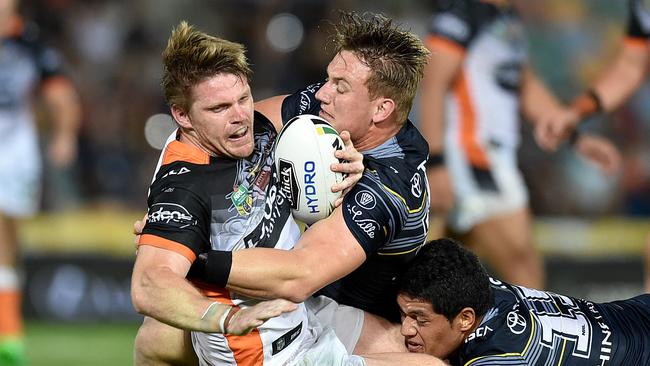
15) Curtis Sironen and Joel Thompson — Manly Sea Eagles
Sironen had a career revival for Manly last season, finding a home on the right edge and posting career highs in terms of line breaks and offloads.
Injuries once again slowed him down, as he only managed 16 games, but in terms of a low cost/high upside purchase Manly definitely got their money’s worth.
Staying on the field should be Sironen’s focus this season — in six seasons in the NRL he’s never managed more than 20 games.
Manly know what they’re getting in Joel Thompson — a consummate professional who runs good lines, makes his tackles and will have more good games than bad.
Thompson put up some of the best numbers of his career in 2017, posting 100m per game, 10 line breaks and 50 tackle busts, his best marks since 2010 when he was in the centres.
He’ll replace Frank Winterstein on the left side and will definitely add another string to Manly’s bow.

14) Ryan James and Kevin Proctor — Gold Coast Titans
Bereft of other options, Ryan James will be switched from the middle to the edge in 2018 for the Titans.
He’s spent some time out wide in the past, but has always been more effective in the middle of the field. He averages 109m per game at prop compared to 88m on the edge and, despite his best efforts, averages more missed tackles and more errors on the edge.
It’s understandable that this is a move made out of necessity more than anything else but it’s a prime example of weakening a strength to strengthen a weakness.
James is a good player, but he’s being forced into a role that doesn’t suit him.
Suspension and injury limited Proctor to 16 games in his first season with the Titans, and while he wasn’t at his best he was better than advertised.
His 88m per game was the second-highest total of his career, but he experienced sharp drops in terms of tackle busts and line breaks.
With a full pre-season and proper time to develop a combination with Ashley Taylor, Proctor could roar back to life this season as he’s still one of the better line runners in the competition.
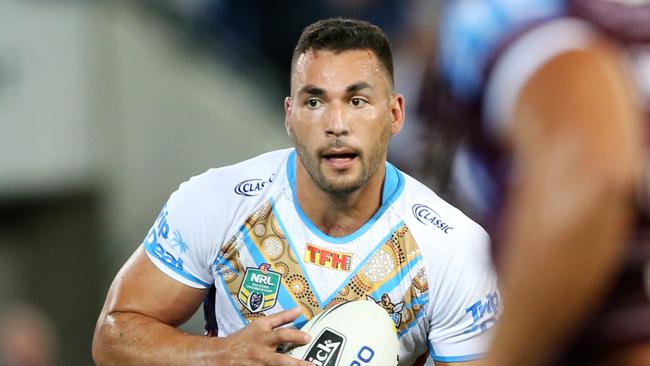
13) Jamie Buhrer and Aidan Guerra — Newcastle Knights
Newcastle’s renewed forward depth means Buhrer may start at hooker again, playing the opening 20 minutes at dummy half before moving back to the left edge.
However, if Nathan Brown opts to start Danny Levi one would imagine Burher would start alongside Aidan Guerra.
Injuries have dogged Buhrer over the past few seasons but the former Sea Eagle still has excellent late footwork and defends well. He’s an experienced hand in a Knights team that has sorely needed such leadership.
Guerra lost his Origin spot after the disaster in Game I but quietly put together his best season in several years.
He’s a smart pick-up for the Knights, giving the club more experience and a built-in combination with Mitchell Pearce. Even if he doesn’t regain the form he showed from 2013 to 2015 he can still be a valuable part of a developing Knights forward pack.

12) Josh Jackson and Raymond Faitala-Mariner — Canterbury Bulldogs
Jackson might have become a State of Origin regular over the past few seasons but the new Bulldogs captain just doesn’t have the same numerical impact as some of his peers.
While Jackson’s prowess as a defender and the effort plays he makes are undoubtedly valuable and cannot be measured on the stat sheet, the things that can be measured are all passable without standing out.
Jackson’s 91m gained per match, 27 tackle busts, three line breaks and 30.8 tackles per game from last season are all good without being great and, while he has the pedigree, he’s a slight notch below the NRL’s top-tier backrowers.
With Adam Elliott’s reported move to the No.13, Canterbury will be forced to turn to Greg Eastwood or Raymond Faitala-Mariner on the left edge.
Eastwood was a very effective player in his day, albeit mainly in the middle of the field, and while he still has good footwork and ball skills for a man his size it’s difficult to say his best days are still in front of him.
Faitala-Mariner has been brought along slowly by the Bulldogs but is an intriguing prospect — the former Warrior has a strong, rangy frame and good footwork. He has far more scope to improve this season than Eastwood.
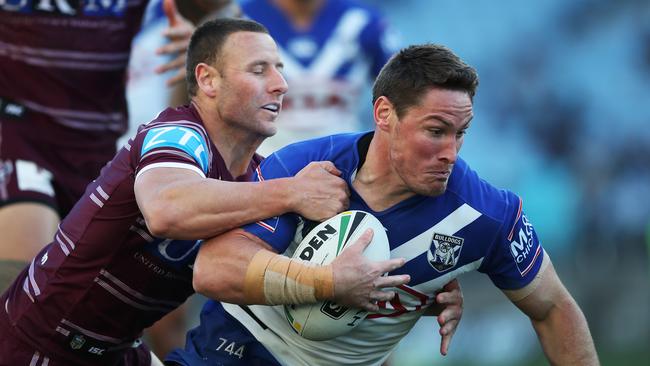
11) Manu Ma’u and Tepai Moeroa — Parramatta Eels
The scariest man in rugby league continued to hold down the fort on the left edge for Parramatta in 2017 as Manu Ma’u played in every game of the season for the first time and continued to stamp himself as one of the better backrowers in the league.
Capable of mixing it up in the middle or using his underrated footwork to prise through gaps, Ma’u does everything the Eels need him to do and his strong World Cup campaign with Tonga was a highlight of another good year.
Moeroa is yet to hit the heights many projected for him after a stellar junior career, as chronic shoulder injuries slowed his progress somewhat, but he’s still only 22 and at times shows flashes of what he could be in the future.
What will be of some concern was a slight decline in productivity from 2016 to 2017, as his metres per game dropped from 81 to 75, but he’s still got time to get it together.
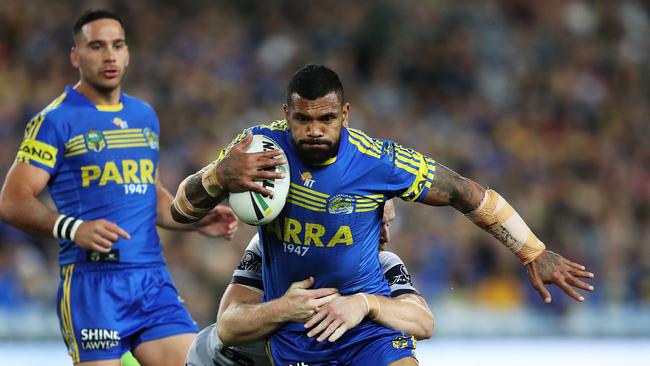
10) Tohu Harris and Leivaha Pulu — New Zealand Warriors
Tohu Harris has to beat two curses in 2018. First, there’s the curse that befalls players who leave Melbourne, which has claimed the likes of Ryan Hoffman, Dallas Johnson, Adam Blair and even Greg Inglis for a while.
A lot of players struggle in their first years away from the Storm, no matter how talented they may be.
Then, he has to beat the curse of joining the Warriors, which has resulted in countless players falling into a pit of mediocrity.
Harris only managed 14 games last season but was in rare form, retaining his place as one of the competition’s premier backrowers. He would have been a worthy man of the match choice in the grand final.
If he can beat both these curses he’s a rare specimen indeed.
New Zealand don’t have a whole lot of back-row depth and either Leivaha Pulu or Bunty Afoa shape as the likely candidates to start on the right edge, assuming Simon Mannering stays at lock.
For our money, Afoa’s poor reads in defence make Pulu the standout candidate.
While he’s been a capable operator for the Titans over the past two seasons, and is an underrated pick-up for New Zealand, he’s only started four matches at second row.
Pulu runs the ball well and is surprisingly mobile for his size but he needs to make the transition to starting player as quickly as possible.
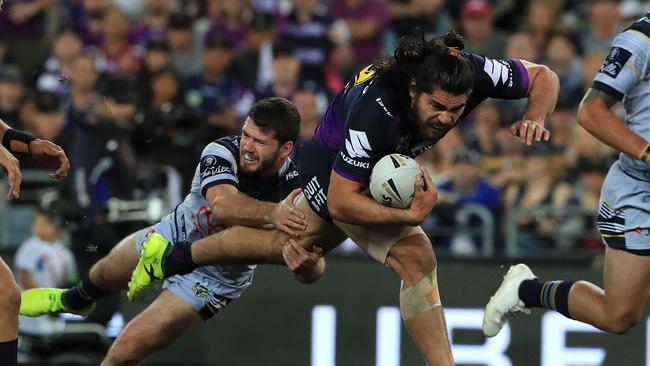
9) Tyson Frizell and Luciano Leilua — St George-Illawarra Dragons
Frizell has earned his place as a Test and Origin regular and managed to produce his most statistically productive season in 2017, running for a career high 101m per game and his 47 tackle busts were the second-highest total of his career.
The 26-year-old can operate in the middle or on the edge but is best suited for the Dragons out wide where his powerful running makes him a nightmare for opposition defenders.
Frizell also does his share of work in the middle regardless, essentially giving the Red V the best of both worlds.
Following Joel Thompson’s departure to Manly, Frizell’s back-row partner remains up in the air with Tariq Sims, Jacob Host and Luciano Leilua the likely candidates.
Sims would be the safest choice, despite spending most of his time in the middle in recent years, but in terms of upside Luciano Leilua is the most exciting choice.
Leilua the younger only has five NRL games to his name and played all of last year in the lower grades but he’s skilful and dynamic and could be a serious weapon for the Dragons.
In his five NRL matches he’s already picked up a try assist and two line break assists and has a year of experience playing against men after a season in the NSW Cup.
It may take some time, but Leilua has the tools to succeed.
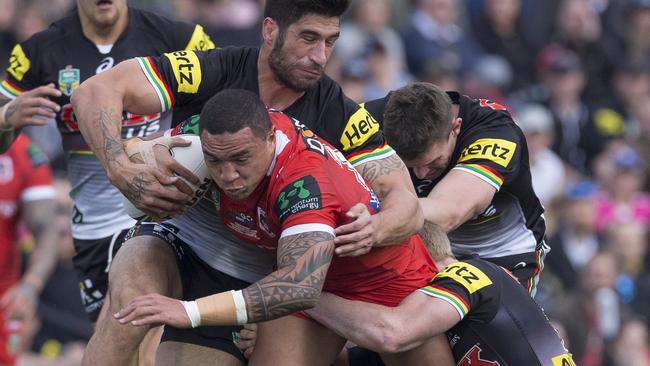
8) Isaah Yeo and Corey Harawira-Naera — Penrith Panthers
Penrith have been in a state of constant turnover with their roster for some time but Isaah Yeo is one of the real success stories and has become a fixture on the left edge.
Yeo secured his place in the starting side in 2016 and backed it up with a near-identical season in 2017, running for 99m per game and recording 45 tackle busts and five line breaks.
He could be in for a slight statistical bump this season — Penrith could run a much more orthodox attack following the arrival of James Maloney and if Yeo can further build his combination with Nathan Cleary the 23-year-old could be the beneficiary.
Harawira-Naera was so impressive in his rookie season that he should start on the right edge ahead of Bryce Cartwright, assuming he’s impressed enough during the pre-season.
Light on his feet but powerful enough to surge through a gap, Harawira-Naera is the prototypical modern backrower and his 13 line breaks last year were behind only Felise Kaufusi among second-rowers.
The young Kiwi slowed down towards the end of the season, as rookies often do, but he’s a player of the future and of the present.
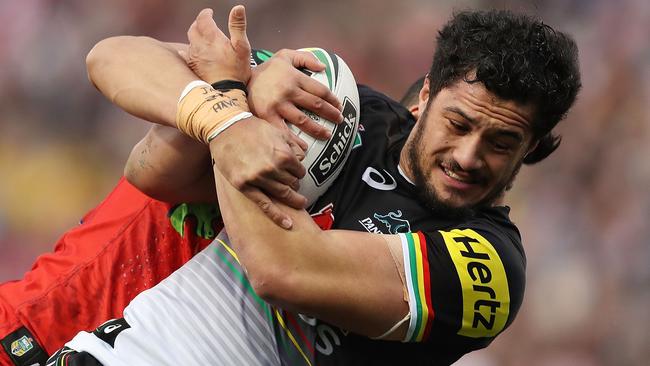
7) Ryan Hoffman and Felise Kaufusi — Melbourne Storm
Legends tell of a factory deep beneath the AAMI Park surface. In this factory they make one thing and one thing only — backrowers.
Ryan Hoffman, Sika Manu, Kevin Proctor, Tohu Harris, Adam Blair — they all came from the factory, they all ran the same lines and as each of them left the club another model was rolled out. In 2017 that new model was Felise Kaufusi.
Melbourne do an excellent job of isolating opposition defenders and getting their backrowers one-on-one with the other team’s half or five-eighth and Kaufusi made the most of it, running in nine tries, making 14 line breaks and finishing the season as a Test representative.
It was a stellar campaign from Kaufusi, who has the tremendous footwork and mobility that is a trademark of the Storm forwards under Bellamy.
One of those former models, Ryan Hoffman, will be rolled out again in 2018 for his third stint with the club.
Hoffman was the prototype Storm backrower, the first model, and the template from which the aforementioned replacements were made.
He doesn’t have the punch or speed of his younger days but he can still run an excellent line and will do all the little things correctly.
His first and second stints in Melbourne contained premierships and rep jerseys and even if he can’t hit those heights again he’s still a very capable footballer.
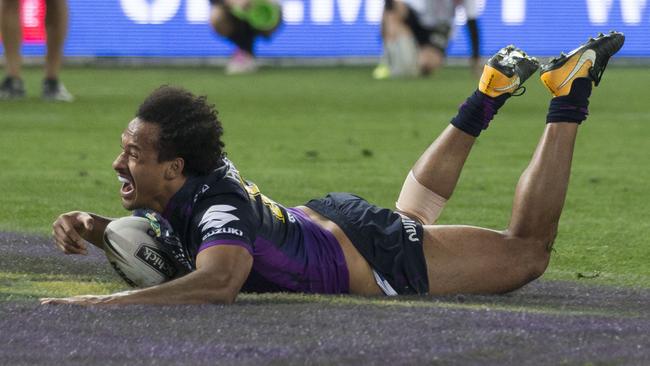
6) Boyd Cordner and Mitchell Aubusson/Ryan Matterson — Sydney Roosters
Boyd Cordner has been a top-class player for some time but over the past two or three seasons he’s asserted himself as the best backrower in the game.
He’s well-rounded enough to be comfortable with all aspects of second-row play, but where he really shines is running the ball.
Cordner averaged 144m per game for the Roosters in 2017 — easily the top mark of all backrowers and well ahead of second-placed Josh Papalii (128m per game).
The Blues skipper angles his runs perfectly, often knifing in behind the back of the ruck to target lazy defenders, and combines well with his halves.
Injury is something of a concern — Cordner has only played 30 games in the past two seasons — but when he plays he’s the top backrower around.
When Angus Crichton joins the Roosters they will sit astride this list but as it stands the Roosters will look to either Mitchell Aubusson or Ryan Matterson.
In an effort to save time you won’t be regaled with more reasons as to why Aubusson is underrated but he’s a tough, smart player and if he is plugged into that position he’ll do a fine job.
If Aubusson is required in the centres the Roosters could turn to Matterson given he filled in for Cordner at times last season.
The tools are there for Matterson to be a real weapon — he’s a veritable giant and has some real skills from his junior days in the halves — but since switching to the forwards full-time he’s looked much more comfortable in the middle.
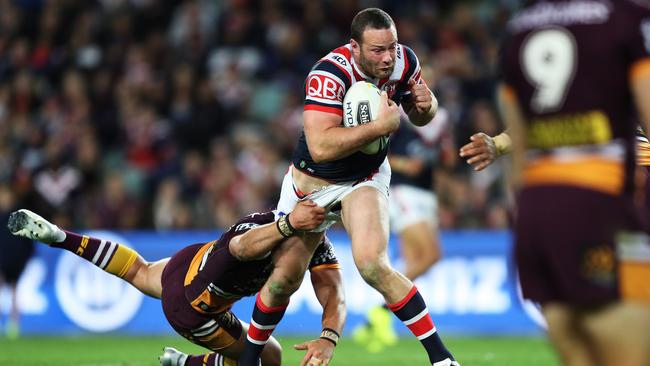
5) Ethan Lowe and Gavin Cooper — North Queensland Cowboys
The North Queensland Cowboys duo might lack for star power but they are two pillars of North Queensland’s success over the past four years.
Cooper came to prominence due to his combination with Johnathan Thurston but he’s so much more than that — Cooper’s contributions on things like kick chase, decoy runs and defence as well as his well-rounded attacking game are what makes him such an important contributor. Cooper showed he can operate at the game’s highest level with strong performances in Origin II and III, playing heavy minutes on the left edge and helping right the Maroons ship after the disaster in Game I.
Lowe has been unlucky not to play Origin football and holds down the right edge as capably as Cooper holds down the left.
Skilful and tough, Lowe continued to put up very agreeable numbers in 2017, notching on average 108m per game and 27.8 tackles.
These two are exactly what North Queensland need them to be and are models of consistency — while there are bigger names on this list, the Cowboys wouldn’t trade a one of them for Lowe or Cooper.
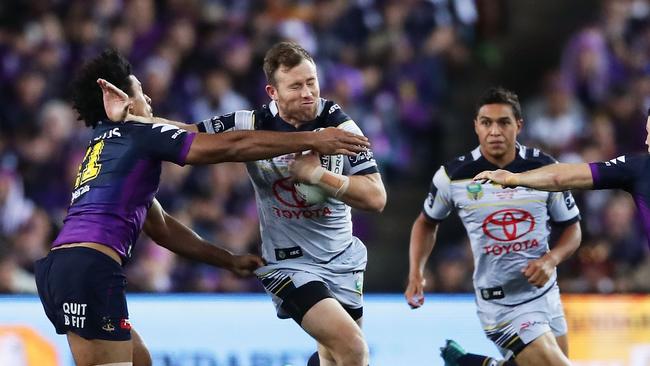
4) Josh Papalii and Elliott Whitehead — Canberra Raiders
Papalii began last season in great form and despite a slow finish that cost him his Australia Test jersey he still tallied a career high in metres gained (128 per game, second only to Cordner among backrowers) and managed eight line breaks, 53 tackle busts and 28 offloads.
A terror on the left edge for the Raiders, Papalii will have to hit the ground running after an unhappy World Cup campaign with Samoa resulted in him reporting to the Raiders in suboptimal condition. But he’s shown his ability in the past and remains one of the most destructive second-rowers in the league when he’s at his best.
Since arriving at the Raiders in 2016 Whitehead has gone from strength to strength, becoming one of Canberra’s most important players.
One of the most prolific defenders for his position, Whitehead also has great hands and is an underrated component of Joey Leilua and Jordan Rapana’s hellish combination on the right side.
After a strong stint at lock in the back half of last year, Whitehead will return to the edge after a stellar World Cup campaign with England — his running battle with Boyd Cordner in the final was one of the highlights of the tournament as Whitehead went down in a points decision to the game’s premiere backrower.
Speculation has abounded that Whitehead may permanently move to lock after a successful stint at the back last season, which would allow the impressive Joseph Tapine to start on the right edge, which would in our view increase the overall effectiveness of the Raiders pack despite Whitehead’s prowess on the edge.
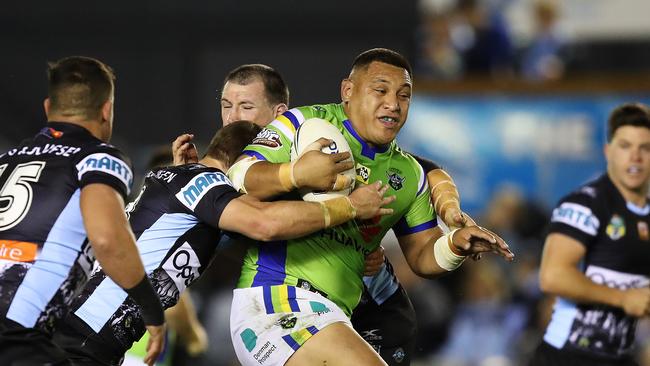
3) Matt Gillett and Alex Glenn — Brisbane Broncos
Along with Cordner, Gillett has become an automatic selection in the Test side and is a popular pick as the best backrower in the game.
A defensive specialist, Gillett’s work in shutting down the opposition’s attacking raids and particularly on kick chases is close to unparalleled.
For a while he struggled to balance the two sides of his game but since then he’s managed to show the best of both worlds — in 2017 his 89m per game, seven line breaks and 55 tackle busts were his best marks since 2014.
Comparatively, Alex Glenn’s career seemed to be on the downswing as a succession of injuries slowed the former New Zealand Test rep down in his 10th season with the Broncos. To his credit, Glenn responded with his best season in years, was a renewed attacking threat on the right edge and struck up an instant combination with Benji Marshall.
Glenn’s average run metres were up from 92 to 100, his 11 line breaks were the highest total of his career, as well as finishing only behind Felise Kaufusi as the competition leader for second-rowers, and his 48 tackle busts was the most he’s recorded since 2012.
He also made a career-low six errors despite his renewed involvement. It was a renaissance year for Glenn, who is one of the more underrated players in Broncos history.
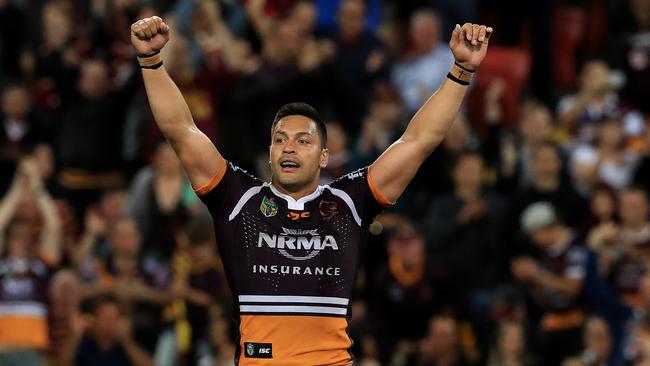
2) Wade Graham and Luke Lewis — Cronulla Sharks
Along with Cordner, Gillett, Frizell, Whitehead and Harris, Graham is one of the best half-a-dozen backrowers in the world at the moment.
It’s been six years since Graham switched from the halves to second row but his skills have never left him, and he remains just as capable of a deft pass, a smart kick or a well-run line.
Graham has 200 games under his belt and is still only 27, and despite securing Test and Origin berths over the past few years he still has time to improve, which is a mighty thing to consider.
When the sun reaches the end of its life span and expands to consume the earth, the last vestige of humanity will be Luke Lewis holding down the fort on the right edge for a footy team somewhere.
Lewis and Paul Gallen are the two longest-serving players in the league, having made their NRL debuts in 2001, and the extraordinary second act of Lewis’s career will continue in 2018 when he records his 100th game for the Sharks.
With over 300 games to his name, Lewis is still capable of busting a tackle and going all the way while he remains a canny ballplayer and one of the toughest customers in a league full of them. Lewis is a true marvel of modern-day rugby league.
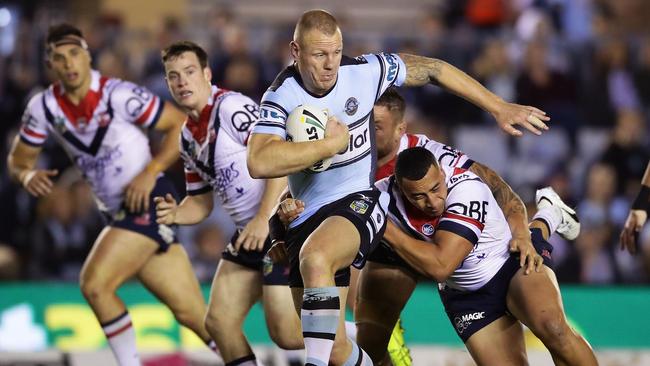
1) Sam Burgess and Angus Crichton — South Sydney Rabbitohs
Burgess has switched from the middle to the edge several times over the course of his Australian career and reports indicate he will once again move to second row in 2018 after playing several games on the left in 2017.
Rabbitohs Sam Burgess set to play as edge 2RF in 2018
— Wackos Whispers (@WackosWhispers) January 22, 2018
The leader of the Burgess clan will likely rotate between the two positions, as he did in his most recent stint at second row, but in the meantime he’ll give the Rabbitohs some sorely needed strikepower out wide.
Burgess always posts strong attacking numbers but out wide his attacking numbers really shoot up — he’s accumulated 13 line breaks in 32 games as a second-rower compared to 38 in 107 games at prop/lock.
Pair him with the Roosters-bound Angus Crichton and South Sydney boast the most offensively destructive back-row pairing in the league.
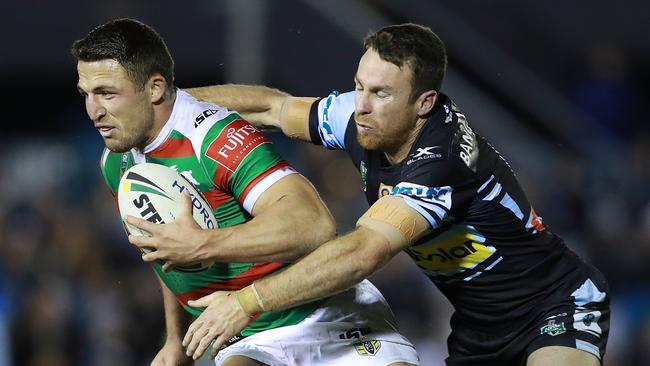
Crichton exploded into form last season, breaking 96 tackles (the ninth most in the league and easily the most of any second-rower) while also busting the line 10 times and scoring seven tries, including a spectacular hat-trick against the Titans.
His departure is a hammer blow for the Rabbitohs and their fans should do their best to enjoy him while they can, because Crichton looks like something special after just 30 NRL games.


